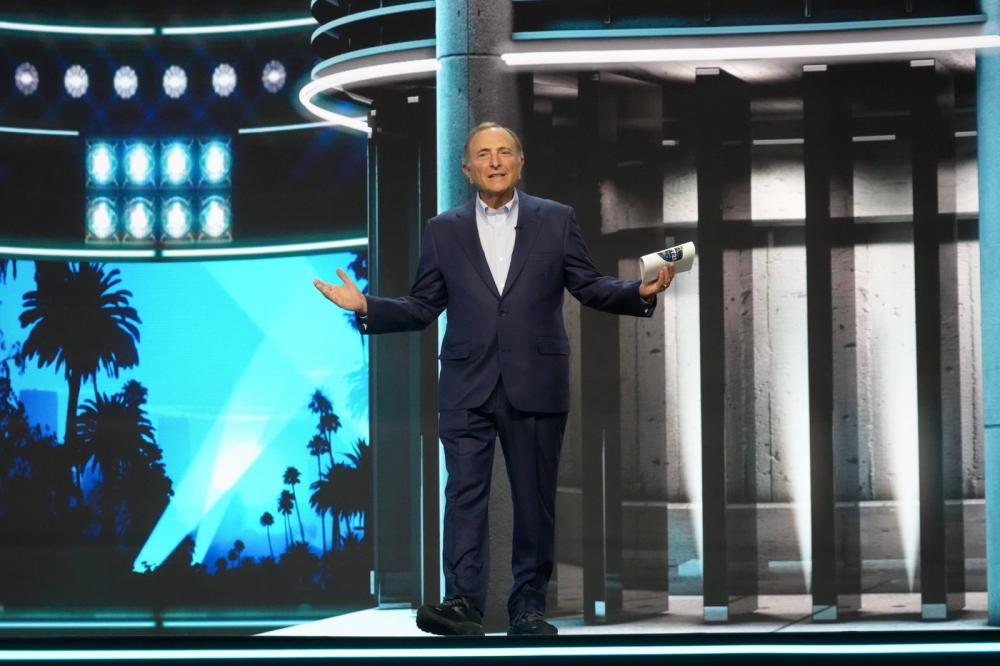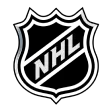NHL News
Key Changes in the New CBA MOU

Image © Kirby Lee-Imagn Images
The NHL and NHLPA officially ratified a new Collective Bargaining Agreement (CBA), set to take effect on September 16, 2026. The updated deal brings several impactful changes aimed at improving roster flexibility, closing some cap maneuvers, and modernizing player compensation. Key updates include new rules around playoff LTIR usage, limits on signing bonus structures, expansion to an 84-game season, and revised emergency goalie protocols. Here's a breakdown of the most notable changes. Check out the latest information on when various elements of the new CBA go into effect.
Playoff LTIR
Much has been made over the years regarding how cup contenders were leveraging LTIR to load up on acquisitions at the Trade Deadline. The NHL is aiming to address this by introducing significant changes to how LTIR is applied both in the regular season and in the playoffs.
New LTIR rules limit cap relief to the league average salary ($3.82M in 2024-25) if the player is expected to return that season; full relief is only allowed if the player is ruled out for both the regular season and playoffs. In the playoffs, teams must keep the total cap hit of dressed players under the regular-season ceiling. Cap hits are not pro-rated, and all dead cap from the regular season (e.g., buyouts, buried contracts) counts toward the playoff cap. For retained salaries, the retaining team's playoff hit is pro-rated, but the acquiring team takes on the full remaining cap hit.
See more about the impact of LTIR, the playoffs, and how the cup finalist teams in 2025 would fare with this new rule here.
Double Retained Contracts
Teams can no longer do a “double retention” trade in which a 3rd party retains a portion of the contract to reduce the player’s cap hit on the new team all at once. Now, a team cannot retain on a contract that has already been retained within 75 regular season days of the first retention. Days outside of the regular season do not count. This means that if a contract is retained at the trade deadline, it cannot be retained again until the second month of the next regular season.
For instance, the Trent Frederic trades last season would not be possible under the new CBA.
Contract Term Limits
New contracts are now limited to a maximum of 6 years for a free agent signing and 7-years for signing a player who was on the roster at the last trade deadline. This is a reduction from the previous 7 years for a free agent signing and 8-years for re-signing with the current team.
See the list of 2026-27 free agents here.
Deferred Salary Contracts
Under the new rules, contracts can no longer defer salary to future years, like Carolina & Toronto have recently employed.
Front-Loaded Deals and Signing Bonuses
Further to term limits, restrictions are being placed on how contracts can be structured year over year. The difference between adjacent years in a contract is restricted to 20% of the first year of the deal. The lowest in any year is limited to 71% of the highest year.
An example of a contract that wouldn't be allowed under the new CBA is Vladislav Gavrikov. The highest year is $9M, meaning the lowest can only be $6.39M, but his last 3 years are $6.0M, $5.4M, $5.4M. This structure would not be permitted in the new CBA.
Additionally, total signing bonuses are now capped at 60% of the total contract value. Note that in a specific season, the signing bonus can exceed 60% of the compensation in that season, but the total signing bonuses in the contract cannot exceed 60% of the total compensation.
For instance, the Leon Draisaitl and Mitch Marner contracts would not be eligible in the CBA because their signing bonuses make up a large portion of their total compensation.
Minor League Compensation ELC Maximums
The CBA limits the compensation in the minors for players on Entry Level Deals. This limit is increasing as follows:
| Draft Year | Minor League Max Compensation |
| 2021 and earlier | $80k |
| 2022, 2023 | $82.5k |
| 2024, 2025 | $85k |
| 2026, 2027 | $87.5k |
| 2028, 2029 | $90k |
| 2030 | $92.5k |
League Minimum Salary
In the past three seasons, the NHL League Minimum was $775k. It is now as follows:
| Season | Salary |
| 2026-27 | $850k |
| 2027-28 | $900k |
| 2028-29 | $950k |
| 2029-30 | $1M |
This means that existing contracts that include NHL base salary below the new minimums in those seasons will be automatically revised up to comply with the minimum. This will result in an increased cap hit for those players. Until the Transition Rules are released, the assumption is that the Cap Hits of those contracts being adjusted will not be adjusted until the 26-27 season.
Entry Level Max Compensation
The maximum entry level compensation will be adjusted as:
| Draft Year | Compensation |
| 2011-2021 | $925k |
| 2022 | $950k |
| 2023 | $950k |
| 2024 | $975k |
| 2025 | $975k |
| 2026 | $1M |
| 2027 & Up | League Minimum + $175k |
Qualifying Offers
Qualifying Offers are required for a team to retain the rights of an Restricted Free Agent. The qualifying offer thresholds have been updated as follows:
| Previous Year Salary | QO Salary Threshold |
| <= $1.25M | 110% |
| $1.25M - $1.75M | 105% |
| >= $1.75M | 100% |
Paper Loans
In previous seasons, teams under the cap would “paper” waivers exempt players to the minors between games to accrue additional cap space. A good example of a player being papered Linus Karlsson on the Vancouver Canucks:
The league is looking to restrict this with a new rule that states that players must report to the AHL and play 1 game before being called up, with the exception of Goalies if the NHL team doesn’t have 2 healthy goalies on the NHL roster.
Four Recall Rule
After the NHL Trade Deadline, NHL Clubs are only permitted to recall four players from the minors (excluding injuries). This has now been increased to five players to give teams a bit more flexibility. However, no more than 4 of the recalls can be on the NHL roster at the same time.
Emergency Goalie (EBUG) Rules
A policy has been established to allow each team to employ an Emergency Goaltender Replacement during the regular season. Emergency goalies must not:
- have played in an NHL Game under an NHL SPC
- have played in more than 80 professional hockey games
- have played professional hockey in the prior three seasons
- have another current contractual obligation that would preclude the ability to serve as the club’s Emergency Goaltender Replacement
- be on the Reserve List or Restricted Free Agency list of any NHL Club.
Roster Emergency Exception
When teams do not have sufficient cap space to ice a full roster, they must play short 1 player for 1 game, and then can use the Roster Emergency Exception. The current rules allow a player with a cap hit of league minimum plus $100K to be used as the exception (currently $875K), and the player does not carry a cap hit. The emergency exception threshold is increasing to the League Minimum Salary + $375K (this is also the Burying Threshold Amount). Using the exception will now create cap consequences. The team will be charged a cap hit equal to the amount of cap space they do have available. The difference between the exception player’s cap hit and the cap space available will be charged the following season as an overage cap charge, similar to a performance bonus overage.
If the team decides to play short instead of utilizing the exception, they will still be charged for the available space and have a carryover charge for the difference between that at burying threshold
Performance Bonus Eligibility
Players under 35 and not on an Entry-Level Contract are only eligible for performance bonuses if they had a significant injury in the previous season. A player now qualifies if either of the following conditions are met:
- Spent at least 100 days on Injured Reserve during the previous season
- Spent the final 70 days of the season on IR and appeared in no more than 2 playoff games
The ability to qualify for the bonuses based on the second point is new in this CBA.
Reserve List – Exclusive Rights
Starting with the 2027 Entry Draft, teams will hold exclusive signing rights to drafted players for a set period based on the player's age:
- Age 18 at draft: Rights retained through June 1 four years later
- Age 19 or older: Rights retained through June 1 three years later
After this period, if unsigned, the player becomes a draft-related Unrestricted Free Agent.
Exception: If the player is a bona fide college student, the exclusive rights extend until 30 days after the player notifies the NHL they’re leaving college hockey.
Other Interesting Items
- CHL Exception: NHL will try to allow each club to have one 19-year-old in the AHL instead of being forced to send them to the CHL. The language points out that this will only happen if the league can reach an agreement with the CHL and AHL.
- European Free Agents: Players aged 25–27 from Europe no longer require an Entry Level Contract and will be subject to the same Entry Level Rules as North American players.
- Midseason PTOs: Teams can sign players to a 10-day PTO with right of first refusal on any NHL deal offered.
- Sponsorship Restrictions: No endorsements involving tobacco or cannabis, including CBD products.
- Neck Protection: Beginning in 2026-27, players with zero games of NHL experience will be required to wear cut-resistant neck protection.








